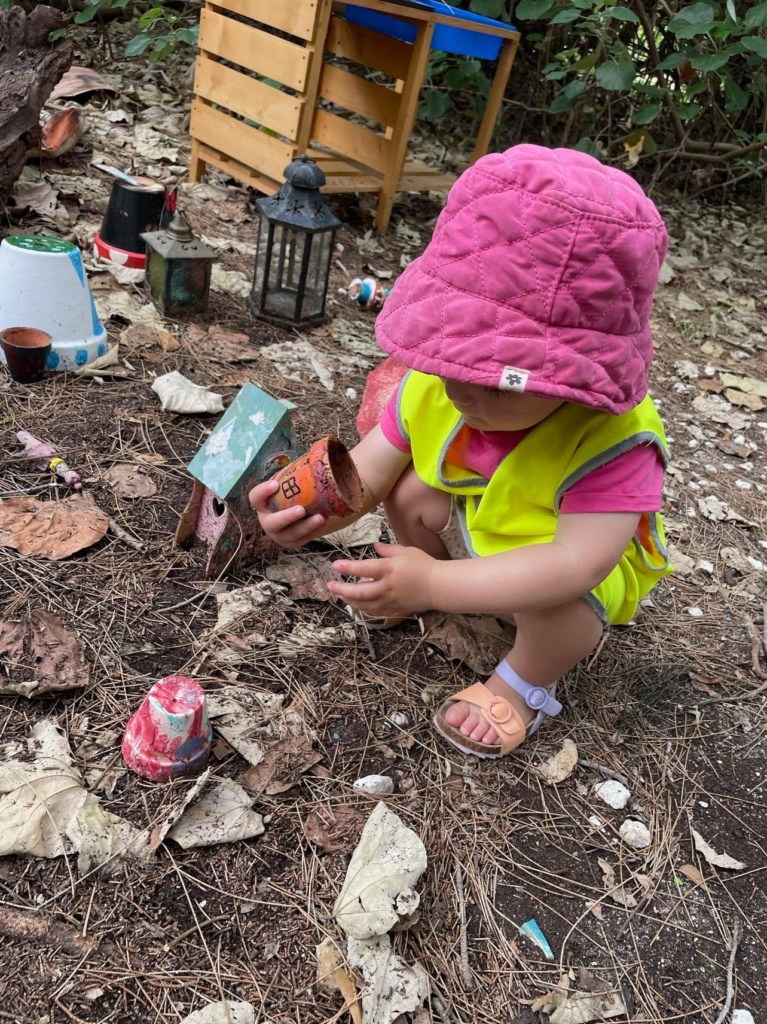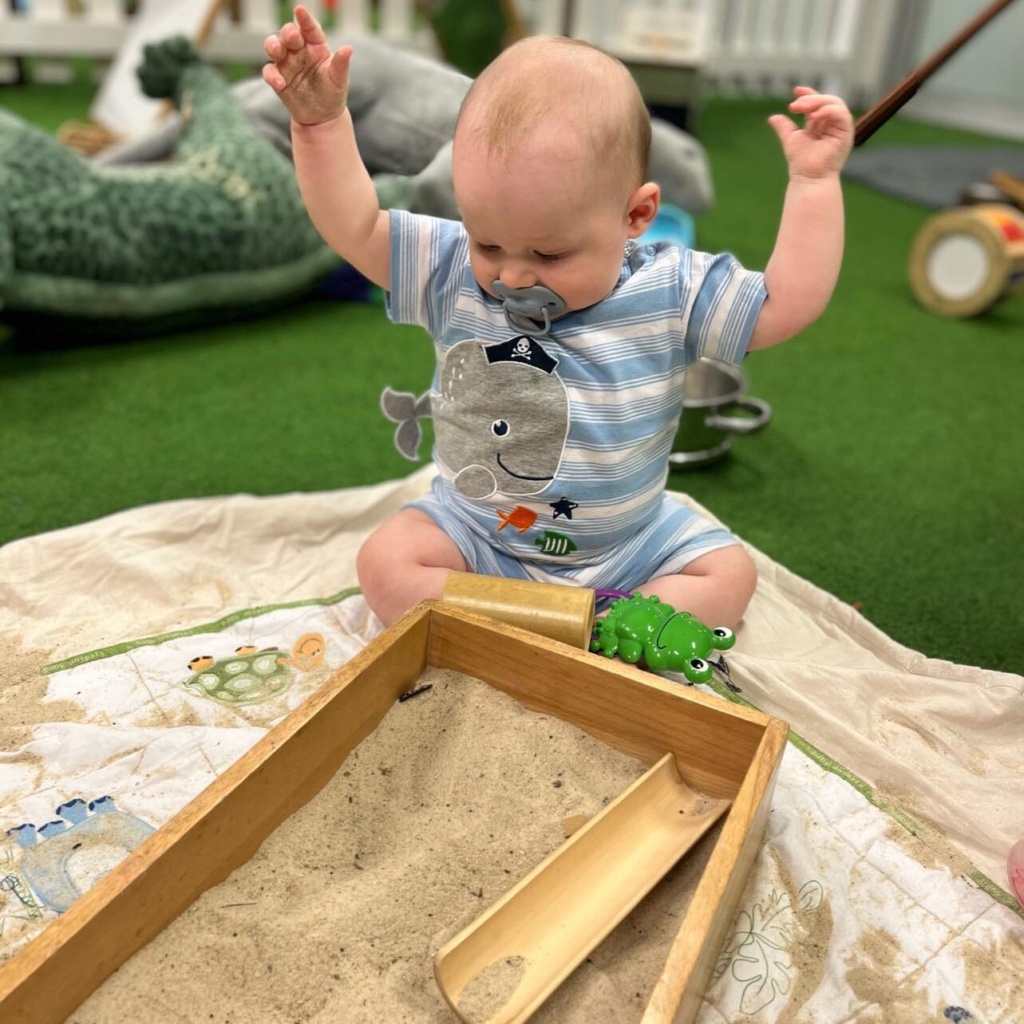Babies are a mysterious bunch. For many months, their main forms of communication are cries, squeaks, gestures and coos. Parents fall madly in love with these little humans without knowing what they’re thinking and feeling, often just guessing at best.
How babies play, how and what they’re learning, and what they’re interested in can be a mystery to many. Many parents have seen their baby pull out every book off a shelf, for example, watch it fall, then grab another, while that parent scratches his or her head and says ‘why?’
Babies are a mysterious bunch. For many months, their main forms of communication are cries, squeaks, gestures and coos. Parents fall madly in love with these little humans without knowing what they’re thinking and feeling, often just guessing at best.
How babies play, how and what they’re learning, and what they’re interested in can be a mystery to many. Many parents have seen their baby pull out every book off a shelf, for example, watch it fall, then grab another, while that parent scratches his or her head and says ‘why?’
There’s an answer. It’s a schema. A schema is both a category of knowledge as well as the process of acquiring that knowledge. In play, babies are often involved in repeated actions or certain behaviours as they explore the world around them and try to find out how things work. Those repetitive actions, such as a baby pulling out book after book, allows a child to practice and construct meaning to something, until they’ve understood that schema. Then they find something else to focus on and lather, rinse, repeat!
As Yvette, educational lead from our Burleigh campus says, it’s children’s development making sense.
“All of those little things that you see children do that seem a bit cute, or frustrating even, like throwing, it’s a schema, a child’s pathway of development for making sense of the world,” Yvette says.
The repetitive action of a schema allows a child to practice and construct meaning until they have mastered the understanding of the schema. Being aware of play schemas helps in two ways:
- It helps parents and educators to differentiate between ‘behaviour’ vs ‘natural urges’ which move past the belief that a child is just being ‘difficult’
- It helps parents and educators to plan learning environments that support the development and mastery of schemas
There are a number of types of schemas when it comes to babies.
Trajectory schema – The trajectory schema is one of the earliest schemas observed in babies. They are fascinated with how they, and objects move. Children will often throw objects or food from their pram or highchair. They climb and jump in puddles and enjoy exploring running water.
Transporting schema – Little ones enjoy repeatedly moving resources around, from one place to another. They will carry many items at a time using their hands, pockets, containers,
baskets, bags, or anything else that will hold their newfound treasures.
Enclosing schema – Children show an interest in enclosed spaces. They may want to sit (and hide in) boxes or laundry baskets. Or they may show interest constructing fences and barricades to enclose toy animals or themselves.
Rotational schema – Children showing a rotational schema may display a preference for turning taps on and off, winding and unwinding string, and playing with
hoops. They may also be fascinated with the physical experience of twirling and twisting their body, spinning around on the spot, or rolling themselves down a hill. They have an interest in things that turn, such as wheels and windmills. They enjoy rolling tyres around, turning lids and watching the washing machine on a spin cycle.
Enveloping schema – Children with an enveloping schema are interested in covering and hiding items, including themselves. They will enjoy dressing up, and filling and emptying bags and containers with different objects.
Connecting schema – Children displaying the connecting schema want to join items together. They find resources like string to tie things. They connect and disconnect toys such as rail tracks.
They enjoy construction toys, and doing arts and crafts where they can glue and stick pieces together.

Orientation schema – Children like to turn objects and themselves around and upside down, to get a view from under the table or from the branch of a tree. They may bend over and look at the world backwards through their legs. They enjoy seeing things from a different view when exploring using cardboard tubes, binoculars or a magnifying glass.
By adapting this theory, we have been able to slow down and become more in tune to the children and noticing their behaviour patterns in play. It is now so important to us that we allow our babies and young children the time to explore the repetitive actions of schematic play.
-Jodie, lead educator
Theory of Cognitive Development
Jean Piaget was one of the first to use the term “schema” back in 1923. Piaget was an important child development theorist and his Theory of Cognitive Development was and still is read and followed today by early childhood specialists. He was one of the first who believed children think differently than adults and that they have an innate desire to learn and actively build up their knowledge about the world. They are not passive creatures waiting for someone to teach them.
Susan, our group pedagogical leader, is bringing her schema knowledge across our campuses to the lead educators in the nursery and toddler studios in 2023. Learn a bit more below about how we use schema theory, and how one educator has taken it on in her nursery.
Schematic Pedagogy
Through our collective curriculum, our educators are guided through a ‘schematic lens’, meaning they can plan for children’s thinking, not just activities. This has a strong link to our Collective Curriculum, our educational program for children.
The learning environment
Our educators apply teaching methodologies to design their play spaces and are intentional in the resources offered.
Observing and planning for children’s thinking
Through our collective curriculum, our educators observe the children through their play, to determine schemas explored through the children’s engagement to an activity or resource. Through observing patterns of learning, our trained educators can plan forward to scaffold their cognitive capabilities.
Partnering with children in play
Through ongoing mentoring and coaching, our educators are able use their knowledge of schemas and plan effectively. Our educators are encouraged to partner with children in their play and observe behaviours explored through schemas.
“Schemas are an intrinsic part of child development, knowledge to schemas provide our team of educators an opportunity to identify and encourage independence in children as they explore patterns of movement, often related to schemas,” Susan says. “Supporting assessing through a schematic lens, provides our educators with a framework which can be used to analyse children’s learning, supporting the planning process within our curriculum.”
Educator Q&A
You may be wondering if you have a baby or a small toddler in one of our campuses, how we use schemas to help their development. We talked to one of the educators at our Deception Bay campus about using schemas for educational programming. Deception Bay Little Scholars was recently rated as Exceeding the National Quality Standard (NQS) after it was assessed by the Department of Education. The NQS sets a high national benchmark for early childhood education and care in Australia. Jodie, lead educator in the nursery studio, says learning about schemas was a game-changer.
- Q: When did you first learn about schemas?
A: I first heard about schematic play by attending a professional development webinar with Semann & Slattery. It resonated with me as I had observed children engage in the different schemas, but didn’t know about schematic play. I found it so intriguing and needed to do more research. I found Jean Piaget’s psychology theory; “while a schema in psychology still refers to how information is organized, it focuses on how the human mind does it”. I have now learnt the what, why and how children learn through repeated patterns of behaviour. - Q: How long have you worked with nursery children? What were your interactions like before?
A: I have worked in the industry coming up to 14 years and only in the past four years, I have engaged in a more full-time educating role with the nursery and toddler-aged children. Prior to this, I struggled with understanding this age group on the emphasis of what, why and how this age group do things so differently, developmentally, and emotionally. Especially toddlers as they are so spontaneous and busy, and how I could best support them as an educator. It wasn’t until I had my second child, who was so vastly different to my first child! She was much more inquisitive, very busy and just like a little tornado ripping through the house. She was never content until she had everything out on the floor! For the most part she never sat and engaged with her toys, (like my first child did). However, could sit very quietly and go unnoticed at times, especially when she would discover the creams on the change table, or the dirt and mud in the backyard while I hung out the washing.
[After learning about schema theory] I was able to resonate with this from my daughter’s tornado toddler years. That it seemed she wasn’t content until she had gone around and pulled everything out, to not even play with any of it, but just move it from place to place. When in fact she was learning! She was learning about horizontal trajectory (dropping objects), vertical trajectory (throwing, pulling, pushing, pointing, climbing) and transporting (moving objects from place to place). - Q: How has your knowledge of schemas adjusted how you spend time with babies and toddlers?
A: With the support and guidance from Susan, I have since adapted Jean Piaget’s schema theory into our collective educational program. By adapting this theory, we have been able to slow down and become more in tune to the children and noticing their behaviour patterns in play. It is now so important to us that we allow our babies and young children the time to explore the repetitive actions of schematic play. Allowing our babies to construct meaning in what they are doing, as babies and young children learn best through, opportunities to engage in active learning through hands on experiences. These opportunities allow babies and children to problem solve, question, predict, imagine, speculate, and develop independent choices as they make decisions in an area, they are familiar with. - Q: How do you see schema theory in action in your nursery?
A: Our younger babies spend a lot of their time engaging in trajectory play. They can be observed doing tummy time, reaching out for objects, kicking their legs, opening and closing their hands, grasping objects, waving arms up and down or side to side. Then onto rolling, sitting, and crawling where their patterns of movement emerge to larger body movements in horizontal and vertical lines e.g., pushing, kicking pointing, rocking, climbing, or stepping up and down as they work towards their important milestone of walking (horizontal trajectory).
Both our younger babies and older babies really enjoy dropping objects or putting things in and out of containers (vertical trajectory). Using old formula tins and cutting an opening in the top with lids from jar foods a milk bottle lids, is a big favourite.
Our older babies are seen continuing with trajectory and begin to start exploring other forms of schematic play like, transporting, rotation, connecting and this can lead to a disconnecting schema where the child builds something that they can demolish or through [activities like] untying knots, as well as enclosing, positioning, enveloping and orientation, such as looking at things from different viewpoints like hanging upside down, looking through their legs, looking at things upside down. No wonder our little people are so busy and on the go all the time!
Thanks, Jodie!
Related:
Pedagogical Practices: Bringing new learning techniques to Little Scholars




